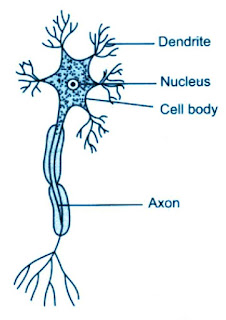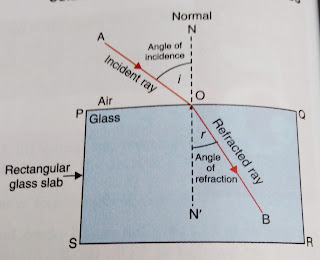NCERT Solutions for Class 8 Science Chapter-wise PDF Download
NCERT Solutions for Class 8 Science Chapter-wise PDF Download increase the skill by providing all NCERT Text book questions which are includes for class 8 syllabus according to CBSE Board. By following NCERT Solution thoroughly all students get advantage to do better in exam.
NCERT Solutions for Class 8 Science Chapter-wise PDF Download provide the students a easy way to solve the CBSE Class 8 Science. In this CBSE 8th Class Solution, we provide detail explanation to solve the Science in which way. Hence by visiting this site, you reach the right place where you get the most detailed and accurate answers to solve NCERT Science Solutions Class 8 and it also free of cost.
NCERT Solutions of Science Class 8 Chapter-wise Free PDF Download
- Chapter 1 Crop Production and Management
- Chapter 2 Microorganisms: Friend and Foe
- Chapter 3 Synthetic Fibres and Plastics
- Chapter 4 Materials: Metals and Non-Metals
- Chapter 5 Coal and Petroleum
- Chapter 6 Combustion and Flame
- Chapter 7 Conservation of Plants and Animals
- Chapter 8 Cell – Structure and Functions
- Chapter 9 Reproduction in Animals
- Chapter 10 Reaching the Age of Adolescence
- Chapter 11 Force and Pressure
- Chapter 12 Friction
- Chapter 13 Sound
- Chapter 14 Chemical Effects of Electric Current
- Chapter 15 Some Natural Phenomena
- Chapter 16 Light
- Chapter 17 Stars and the Solar System
- Chapter 18 Pollution of Air and Water
Chapter-wise NCERT Solutions for Class 8 Science
NCERT Solutions Class 8 Science provide a big advantage to all CBSE Students. While they practicing Science for board exam or for any competitive exam, they can take NCERT Solutions for Class 8 as a reference one. The exercise which are provide in NCERT Science Text book enhance your concept to solve a problem.
Key Features of NCERT Class 8 Science Solutions
These solutions cover all the chapters that are included in the Class 8 Science book.
Students can get a suitable idea and concept to give the answers to the point and more accurately.
These CBSE 8th Science Solutions are free of cost and student can access them.
NCERT Class 8 Science Solutions Chapter Brief:
Chapter 1 Crop Production and Management
In this lesson we discuss about types of crops, Kharif crops and Rabi crops, basic practices of crop production, preparation of soil, agricultural implements, sowing of seeds and transplanting, adding manure and fertiliser, crop rotation, removing of weeds, harvesting and storing of food grains.
Chapter 2 Microorganisms: Friend and Foe
In this lesson we discuss about major groups of micro-organisms like bacteria, virus, protozoa, some fungi and algae; discuss about diseases causing micro-organisms, discuss about useful and harmful mico-organisms, carriers of diseases causing micro-organisms, diseases caused due to micro-organisms, food poisoning and preservation of food, nitrogen fixation and nitrogen cycle.
Chapter 3 Synthetic Fibres and Plastics
In this lesson we discuss about natural fibres and synthetic fibre, types of synthetic fibre like nylon, acrylic, polyester; characteristics of synthetic fibres; discuss about plastic along with polythene, polyvinyl chloride, bakelite, melamine and teflon; discuss about useful properties of plastics; what are biodegradable and non-biodegradable materials.
Chapter 4 Materials: Metals and Non-Metals
In this chapter we discuss about elements, types of elements; discuss in detail about metals, non-metals, metalloids; physical properties ( malleability, ductility, conductivity, lustre, strength, sonorousness, hardness) of metals and non-metals; reaction of metals and non-metals with oxygen, water, acids, bases; reactivity series of metals; uses of metals and non-metals.
Chapter 5 Coal and Petroleum
In this chapter we discuss about natural resources; exhaustible and inexhaustible resources; fossil fuels like coal and petroleum; know about coal in detail and its uses; discuss about coal products like coal gas, coal tar coke; discuss in detail about petroleum like its occurrence, its extraction and refining process, discuss about petroleum products like petroleum gas, petrol, kerosene, diesel.
Chapter 6 Combustion and Flame
In this chapter we discuss about combustible substances and non-combustible substances; necessary conditions for combustion, what are combustible substances; which is supporter of combustion; what is ignition temperature; the history of match stick; how do we control fire, discuss about various types of combustion like rapid combustion, spontaneous combustion, explosive combustion; what is fuels , what is calorific value; discuss in detail about flame; harmfulness of burning fuel.
Chapter 7 Conservation of Plants and Animals
In this chapter we discuss about deforestation and their causes; harmful effect of deforestation, ways to conserve forest and wildlife; what is biosphere reserves, importance of biosphere reserves; what is flora and fauna; what is the difference between wildlife sanctuary and zoo; what is the difference wildlife sanctuary and national park; what are extinct and endangered animals; recycling of paper.
Chapter 8 Cell – Structure and Functions
In this chapter we discuss about discovery of cell, various parts of cell like cell membrane, cytoplasm, nucleus, mitochondria, cell wall, chloroplasts, vacuole; discuss about structure of animal cell and plant cell; what are prokaryotic and eukaryotic cells; discuss in detail about tissue, organ, organ system and organisms.
Chapter 9 Reproduction in Animals
In this chapter we discuss what is reproduction, method of reproduction; different types of reproduction like asexual reproduction and sexual reproduction; sexual reproduction in animals, discuss in detail about male and female reproductive system; what is fertilisation, discuss in detail about development of embryo; what is viviparous and oviparous animals, what is metamorphosis, metamorphosis found in frog, silk moth, discuss in detail of asexual reproduction like binary fission and budding; what is cloning.
Chapter 10 Reaching the Age of Adolescence
In this chapter we discuss about adolescence and puberty; changer of puberty; secondary sexual characteristics of humans; roles of hormones in initiating reproductive functions; reproductive phase of life in humans like menarche and menopause; menstrual cycle; sex determination, role of hormones in completing the life history of frogs and insects.
Chapter 11 Force and Pressure
In this chapter we discuss what is force and its effects; discuss in detail about types of force like muscular force, frictional force, magnetic force, electrostatic force, gravitational force; what is pressure; pressure exerted by liquids; pressure exerted by gases; what is atmospheric pressure; application of atmospheric pressure in everyday life;
Chapter 12 Friction
In this chapter we discuss what is friction; factors which influence the friction; various types of frictions like static friction, sliding friction and rolling friction; advantages and disadvantages of friction; methods of increasing and decreasing friction; friction in liquids and gases.
Chapter 13 Sound
In this chapter we discuss about source of sound and how do it produce; sound produced by humans: voice box or larynx; how do sound propagate; discuss about sound properties like amplitude, loudness, pitch; what are audible and inaudible sounds; what are noise and music; cause and prevention of noise pollution.
Chapter 14 Chemical Effects of Electric Current
In this chapter we discuss what is good conductors and poor conductors of electricity; discuss about LED; what are electrolyte and non-electrolyte; chemical effect of electric current; electrolysis of water and electroplating;
Chapter 15 Some Natural Phenomena
In this chapter we discuss about lightning' charging by rubbing; charged objects; discuss about various types of charged objects like positive charge and negative charge; interaction between positive charge and negative charge; electroscope, earthing; what is earthquake; discuss about richter scale and seismograph; protection against earthquake.
Chapter 16 Light
In this chapter we discuss what is reflection of light; laws of reflection of light; formation of image by a plane mirror; lateral inversion; what is regular reflection; what is diffuse reflection; multi images formed by kaleidoscope; dispersion of light; detail discussion about human eye; discuss about eye diseases.
Chapter 17 Stars and the Solar System
In this chapter we discuss about celestial objects; moon and its phases; surface of moon; stars; light year; pole star; groups of stars, constellations; ursa major; orion; cassiopeia and leo major; solar system; artificial satellites;
Chapter 18 Pollution of Air and Water
In this chapter we discuss what is air pollution, causes of air pollution; what is air pollutant; what is smog, acid rain, green house gas, global warming; what is water pollution; causes of water pollution; prevention of water pollution; what is potable water; purification of water.
Frequently Asked Questions on NCERT Solutions for Class 8 Science Chapter-wise PDF Download
(1) To prepare for board exam more perfectly and to give the answers more accurately, which chapters in NCERT Solutions for Class 8 Science are important ?
To prepare for board exam more perfectly and give the answers more accurately ( to the point) all the chapters are important. But there are some chapters which provide many scope to get numbers easily and also help to increase your over all score in class 8 exam. There are some chapters also which helps in future learning in upper class such as introduction of graphs (coordinate geometry), mensuration, cube and cube root, square and square roots, quadrilaterals etc.
(2) Does NCERT Solutions for Class 8 Science PDF help the students in their exam preparation ?
The PDF available are free of cost and download free. Also arrange in sequence to easily access all the chapters. By precisely following CBSE syllabus, we give the answers of all questions and easy way manner to get the concept of giving answers even the difficult questions also.
(3) Where can i get the chapter-wise answers of the NCERT Solutions for Class 8 Science?
By visiting this site, you reach the right place to get the solutions of all questions related to class 8 Science which are provided according to CBSE syllabus and all the chapters are easy to access and since they are arrange in sequence so all the chapter solutions are within your hand.

